Volume 9 | Number 2 | November 2020
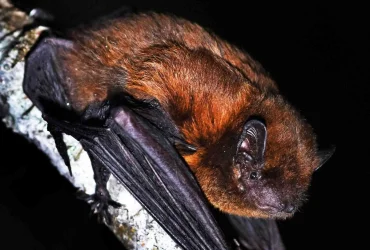 v9i2.232
v9i2.232ISSN: 1800-427X (printed)
eISSN: 1800-427X (online)
DOI:10.47605/tapro.v9i2.232
Submitted date: 01 October 2020
Accepted date: 14 November 2020
Published date: 28 November 2020
Pp. 205–209, pls. 55–57.
REDESCRIPTION OF Minervarya nicobariensis (STOLIZKA, 1870) (AMPHIBIA : DICROGLOSSIDAE) WITH A NEOTYPE DESIGNATION
S.R. Chandramouli* & K.V. Devi Prasad
*Corresponding author. E-mail: findthesnakeman@gmail.com
Abstract
The poorly-known, insular endemic frog species, Minervarya nicobariensis (Stoliczka, 1870) is re-described based on new material from the Nicobar Archipelago. A neotype is designated as its holotype had been lost. Novel data on biology, ecology, distribution and natural history of this poorly known species are provided. Breeding biology and larval morphology are described in detail. Potential threats to the species are discussed and an assessment of its conservation status is attempted.
Key words : Distribution, endemic, India, larval morphology, natural history, Nicobar Archipelago.
Section Editor: Enrique La Marca
LSID:urn:lsid:zoobank.org
eISSN: 1800-427X (online)
DOI:10.47605/tapro.v9i2.232
Submitted date: 01 October 2020
Accepted date: 14 November 2020
Published date: 28 November 2020
Pp. 205–209, pls. 55–57.
REDESCRIPTION OF Minervarya nicobariensis (STOLIZKA, 1870) (AMPHIBIA : DICROGLOSSIDAE) WITH A NEOTYPE DESIGNATION
S.R. Chandramouli* & K.V. Devi Prasad
*Corresponding author. E-mail: findthesnakeman@gmail.com
Abstract
The poorly-known, insular endemic frog species, Minervarya nicobariensis (Stoliczka, 1870) is re-described based on new material from the Nicobar Archipelago. A neotype is designated as its holotype had been lost. Novel data on biology, ecology, distribution and natural history of this poorly known species are provided. Breeding biology and larval morphology are described in detail. Potential threats to the species are discussed and an assessment of its conservation status is attempted.
Key words : Distribution, endemic, India, larval morphology, natural history, Nicobar Archipelago.
Section Editor: Enrique La Marca
LSID:urn:lsid:zoobank.org
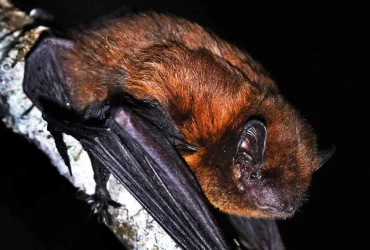 v9i2.231
v9i2.231ISSN: 1800-427X (printed)
eISSN: 1800-427X (online)
DOI:10.47605/tapro.v9i2.231
Submitted date: 13 September 2020
Accepted date: 14 November 2020
Published date: 28 November 2020
Pp. 194–204, pls. 53–54.
ON THE IDENTITY OF TWO Fejervarya FROG (DICROGLOSSIDAE) SPECIES FROM THE ANDAMAN AND NICOBAR ARCHIPELAGO
S.R. Chandramouli*, Dasari Ankaiah, K.V. Devi Prasad & Venkatesan Arul
*Corresponding author. E-mail: findthesnakeman@gmail.com
Abstract
The taxonomic status of the large-sized Fejervarya frogs of the Andaman and Nicobar Islands was assessed based on integrative analysis of molecular, morphological and acoustic data. Our results identify the population from the Andaman Islands as Fejervarya moodiei, and that from the Nicobar Islands as F. limnocharis. Representative specimens collected during this study are described along with observations on their natural history. The distribution of F. moodiei within the Andaman Islands and F. limnocharis in the Nicobar Islands recorded during this study are mapped, suggesting that these species are fairly widespread.
Key words : Fejervarya cancrivora, Fejervarya moodiei, Fejervarya limnocharis, India, mangrove.
Section Editor: Enrique La Marca
eISSN: 1800-427X (online)
DOI:10.47605/tapro.v9i2.231
Submitted date: 13 September 2020
Accepted date: 14 November 2020
Published date: 28 November 2020
Pp. 194–204, pls. 53–54.
ON THE IDENTITY OF TWO Fejervarya FROG (DICROGLOSSIDAE) SPECIES FROM THE ANDAMAN AND NICOBAR ARCHIPELAGO
S.R. Chandramouli*, Dasari Ankaiah, K.V. Devi Prasad & Venkatesan Arul
*Corresponding author. E-mail: findthesnakeman@gmail.com
Abstract
The taxonomic status of the large-sized Fejervarya frogs of the Andaman and Nicobar Islands was assessed based on integrative analysis of molecular, morphological and acoustic data. Our results identify the population from the Andaman Islands as Fejervarya moodiei, and that from the Nicobar Islands as F. limnocharis. Representative specimens collected during this study are described along with observations on their natural history. The distribution of F. moodiei within the Andaman Islands and F. limnocharis in the Nicobar Islands recorded during this study are mapped, suggesting that these species are fairly widespread.
Key words : Fejervarya cancrivora, Fejervarya moodiei, Fejervarya limnocharis, India, mangrove.
Section Editor: Enrique La Marca
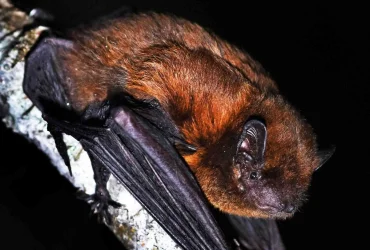 v9i2.230
v9i2.230ISSN: 1800-427X (printed)
eISSN: 1800-427X (online)
DOI:10.47605/tapro.v9i2.230
Submitted date: 14 November 2020
Accepted date: 21 November 2020
Published date: 28 November 2020
Pp. 174–193, pls. 51–52.
A NEW SPECIES OF THE Pareas hamptoni COMPLEX (SQUAMATA : SERPENTES : PAREIDAE) FROM THE GOLDEN TRIANGLE
Li Ding, Zening Chen, Chatmongkon Suwannapoom, Tan Van Nguyen*,
Nikolay A. Poyarkov & Gernot Vogel
*Corresponding author. E-mail: tan@svw.vn
Abstract
An investigation of the taxonomic status of Pareas hamptoni (Hampton's Slug snake) based on morphological and molecular data revealed a new distinct species from the Golden Triangle region (comprising parts of southern China, and adjacent Laos and Thailand). The new species is shown to be a sister species to P. hamptoni but can be separated from the latter by having 3–5 dorsal scale rows at midbody slightly keeled (vs 5–9 scales strongly keeled); a lower number of ventrals, 170–188 (vs 185–195); and a lower number of subcaudals, 67–91 (vs 91–99). The new species is currently known from northwestern Thailand, northern Laos, and the southern part of Yunnan Province in China at elevations of 1,160–2,280 m a.s.l. We suggest that the new species to be considered of Least Concern (LC) in the IUCN's Red List categories. Problems of taxonomy and actual distribution of the P. hamptoni complex are briefly discussed; our results show P. hamptoni is now reliably known only from Myanmar and Vietnam, but its occurrence in Yunnan Province of China is likely.
Key words : China, Indo-Burma, Laos, Pareas formosensis, Pareas mengziensis, Thailand
Section Editor: Philip Bowles
LSID:urn:lsid:zoobank.org
eISSN: 1800-427X (online)
DOI:10.47605/tapro.v9i2.230
Submitted date: 14 November 2020
Accepted date: 21 November 2020
Published date: 28 November 2020
Pp. 174–193, pls. 51–52.
A NEW SPECIES OF THE Pareas hamptoni COMPLEX (SQUAMATA : SERPENTES : PAREIDAE) FROM THE GOLDEN TRIANGLE
Li Ding, Zening Chen, Chatmongkon Suwannapoom, Tan Van Nguyen*,
Nikolay A. Poyarkov & Gernot Vogel
*Corresponding author. E-mail: tan@svw.vn
Abstract
An investigation of the taxonomic status of Pareas hamptoni (Hampton's Slug snake) based on morphological and molecular data revealed a new distinct species from the Golden Triangle region (comprising parts of southern China, and adjacent Laos and Thailand). The new species is shown to be a sister species to P. hamptoni but can be separated from the latter by having 3–5 dorsal scale rows at midbody slightly keeled (vs 5–9 scales strongly keeled); a lower number of ventrals, 170–188 (vs 185–195); and a lower number of subcaudals, 67–91 (vs 91–99). The new species is currently known from northwestern Thailand, northern Laos, and the southern part of Yunnan Province in China at elevations of 1,160–2,280 m a.s.l. We suggest that the new species to be considered of Least Concern (LC) in the IUCN's Red List categories. Problems of taxonomy and actual distribution of the P. hamptoni complex are briefly discussed; our results show P. hamptoni is now reliably known only from Myanmar and Vietnam, but its occurrence in Yunnan Province of China is likely.
Key words : China, Indo-Burma, Laos, Pareas formosensis, Pareas mengziensis, Thailand
Section Editor: Philip Bowles
LSID:urn:lsid:zoobank.org
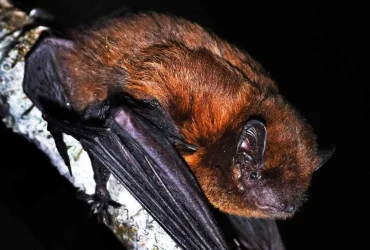 v9i2.229
v9i2.229ISSN: 1800-427X (printed)
eISSN: 1800-427X (online)
DOI:10.47605/tapro.v9i2.229
Submitted date: 30 April 2020
Accepted date: 31 October 2020
Published date: 28 November 2020
Pp. 164–173, pls. 49–50.
A NEW CRYPTIC SPECIES OF BUSH FROG (AMPHIBIA : ANURA : Raorchestes) FROM THE SOUTHERN EASTERN GHATS, INDIA
Gaurang G. Gowande, S.R. Ganesh & Zeeshan A. Mirza*
*Corresponding author. E-mail: snakeszeeshan@gmail.com
Abstract
A new cryptic lineage of bush frogs of the genus Raorchestes from the understudied Eastern Ghats of India is described. Molecular phylogenetic reconstructions using mitochondrial 16S rRNA gene sequences suggest that the new species belongs to the Raorchestes charius clade, is sister to the allopatric R. charius of the Western Ghats and support the species-level distinctiveness of the lineage. The new species morphologically resembles R. charius from which it can be distinguished using the following characters: narrower head (HW/SVL 0.31 vs 0.34–0.36), wider inter upper eyelid (IUE/SVL 0.14–0.16 vs 0.11–0.13), greater maximum upper eyelid width (UEW/SVL 0.10–0.12 vs 0.06–0.09) and shorter thigh (TL/SVL 0.32–0.43 vs 0.44–0.51). Acoustic observations from the breeding males further corroborate the distinct specific status of the new species. The discovery of this new species of bush frog from an understudied landscape suggests that additional extensive surveys in the Eastern Ghats would yield several more amphibian lineages yet unknown to science.
Key words : arboreal frog, cryptic species, Kollimalai Massif, Philautus, Rhachophoridae, systematics.
Section Editor: Suranjan Karunarathna
LSID:urn:lsid:zoobank.org
eISSN: 1800-427X (online)
DOI:10.47605/tapro.v9i2.229
Submitted date: 30 April 2020
Accepted date: 31 October 2020
Published date: 28 November 2020
Pp. 164–173, pls. 49–50.
A NEW CRYPTIC SPECIES OF BUSH FROG (AMPHIBIA : ANURA : Raorchestes) FROM THE SOUTHERN EASTERN GHATS, INDIA
Gaurang G. Gowande, S.R. Ganesh & Zeeshan A. Mirza*
*Corresponding author. E-mail: snakeszeeshan@gmail.com
Abstract
A new cryptic lineage of bush frogs of the genus Raorchestes from the understudied Eastern Ghats of India is described. Molecular phylogenetic reconstructions using mitochondrial 16S rRNA gene sequences suggest that the new species belongs to the Raorchestes charius clade, is sister to the allopatric R. charius of the Western Ghats and support the species-level distinctiveness of the lineage. The new species morphologically resembles R. charius from which it can be distinguished using the following characters: narrower head (HW/SVL 0.31 vs 0.34–0.36), wider inter upper eyelid (IUE/SVL 0.14–0.16 vs 0.11–0.13), greater maximum upper eyelid width (UEW/SVL 0.10–0.12 vs 0.06–0.09) and shorter thigh (TL/SVL 0.32–0.43 vs 0.44–0.51). Acoustic observations from the breeding males further corroborate the distinct specific status of the new species. The discovery of this new species of bush frog from an understudied landscape suggests that additional extensive surveys in the Eastern Ghats would yield several more amphibian lineages yet unknown to science.
Key words : arboreal frog, cryptic species, Kollimalai Massif, Philautus, Rhachophoridae, systematics.
Section Editor: Suranjan Karunarathna
LSID:urn:lsid:zoobank.org
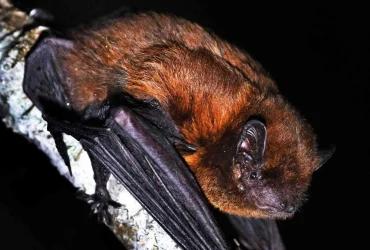 v9i2.228
v9i2.228ISSN: 1800-427X (printed)
eISSN: 1800-427X (online)
DOI:10.47605/tapro.v9i2.228
Submitted date: 12 October 2020
Accepted date: 14 November 2020
Published date: 28 November 2020
Pp. 136–163, pls. 46–48.
A NEW CRYPTIC SPECIES OF THE GENUS Microhyla (AMPHIBIA : MICROHYLIDAE) FROM LANGBIAN PLATEAU, VIETNAM
Nikolay A. Poyarkov*, Tan Van Nguyen, Alexey V. Trofimets & Vladislav A. Gorin
*Corresponding author. E-mail: n.poyarkov@gmail.com
Abstract
An integrative taxonomic analysis combining molecular and morphological lines of evidence revealed a new cryptic species of the Microhyla achatina species group from the Langbian Plateau of southern Vietnam. The new species was previously confused with its recently described morphologically similar and sympatric sister species, M. pineticola. The new species can be distinguished from M. pineticola by the presence of a continuous dark stripe running from the posterior edge of its eye towards the groin (vs dark markings interrupted above the axilla), snout acuminate in lateral profile (vs rounded), belly colour pattern, and foot webbing. The new species is currently known only from Bidoup–Nui Ba National Park in Lam Dong Province, Langbian Plateau in southern Vietnam (at elevations of 1300–1600 m a.s.l). We suggest the new species to be considered as Near Threatened (NT) in the IUCN Red List. Our results emphasize that our understanding of the diversity of genus Microhyla is still far from complete, and provide further evidence for montane areas of southern Vietnam to be a centre of Microhyla species richness. Our study further underscores the urgent need for intensified integrative taxonomic research on Microhyla spp. in order to clarify the taxonomy of wide-ranging species complexes and to elaborate effective conservation measures.
Key words : Bidoup–Nui Ba National Park, Microhyla pineticola, mtDNA, sympatry, taxonomy.
Section Editor: Thasun Amarasinghe
LSID:urn:lsid:zoobank.org
eISSN: 1800-427X (online)
DOI:10.47605/tapro.v9i2.228
Submitted date: 12 October 2020
Accepted date: 14 November 2020
Published date: 28 November 2020
Pp. 136–163, pls. 46–48.
A NEW CRYPTIC SPECIES OF THE GENUS Microhyla (AMPHIBIA : MICROHYLIDAE) FROM LANGBIAN PLATEAU, VIETNAM
Nikolay A. Poyarkov*, Tan Van Nguyen, Alexey V. Trofimets & Vladislav A. Gorin
*Corresponding author. E-mail: n.poyarkov@gmail.com
Abstract
An integrative taxonomic analysis combining molecular and morphological lines of evidence revealed a new cryptic species of the Microhyla achatina species group from the Langbian Plateau of southern Vietnam. The new species was previously confused with its recently described morphologically similar and sympatric sister species, M. pineticola. The new species can be distinguished from M. pineticola by the presence of a continuous dark stripe running from the posterior edge of its eye towards the groin (vs dark markings interrupted above the axilla), snout acuminate in lateral profile (vs rounded), belly colour pattern, and foot webbing. The new species is currently known only from Bidoup–Nui Ba National Park in Lam Dong Province, Langbian Plateau in southern Vietnam (at elevations of 1300–1600 m a.s.l). We suggest the new species to be considered as Near Threatened (NT) in the IUCN Red List. Our results emphasize that our understanding of the diversity of genus Microhyla is still far from complete, and provide further evidence for montane areas of southern Vietnam to be a centre of Microhyla species richness. Our study further underscores the urgent need for intensified integrative taxonomic research on Microhyla spp. in order to clarify the taxonomy of wide-ranging species complexes and to elaborate effective conservation measures.
Key words : Bidoup–Nui Ba National Park, Microhyla pineticola, mtDNA, sympatry, taxonomy.
Section Editor: Thasun Amarasinghe
LSID:urn:lsid:zoobank.org
Hubungi Kami
The ultimate aim of the journal is to provide an effective medium for communication of the latest and best scientific information.
Copyright © 2020 Taprobanica. All Rights Reserved
Jasa Pembuatan Website by IKT




